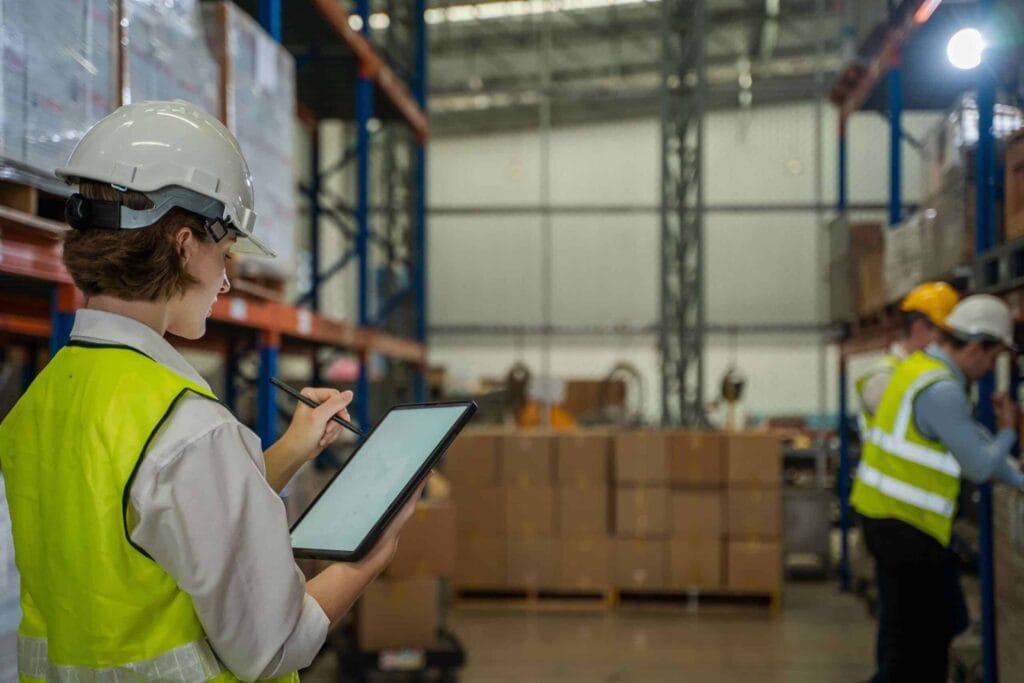The Earth’s land is a finite resource. Historically, little consideration has been given to the impact of our actions and practices or the state in which we will leave the land for future generations – until now. With the increasing global demand for products, the manufacturing sector isn’t slowing down anytime soon, yet it remains one of the world’s top polluters. It also plays a critical role in driving positive change and making a difference in protecting Mother Earth. Leaders themselves can take the lead in such change, including how they use the land for their operations to reduce their businesses’ environmental footprint.
The pressure on manufacturers isn’t going away – it is only intensifying. Worldwide, governments, including the European Union (EU), are introducing strict measures such as the EU Deforestation-free Regulation (EUDR) that ban products associated with deforestation. Similar to the EUDR, the United States has proposed the Fostering Overseas Rule of Law and Environmentally Sound Trade (FOREST) Act that “restricts certain commodities produced on illegally deforested land from accessing its market. In Australia, the Industrial Chemicals Act 2019 regulates the introduction and use of industrial chemicals, ensuring that manufacturers comply with safety and environmental standards.
The financial risks tied to land use have begun to escalate as regulations multiply in number and scope across different regions. Regulations will continue to evolve, becoming more robust and comprehensive, underlining the need for leaders to act decisively. Manufacturers can’t hide from these changing regulations or laws and must face these challenges head-on.
The good news is that by adopting sustainable land use policies and solutions like microfactories, manufacturers can change the course of the past and start to make a positive impact.
State of play: the current state of land use in manufacturing
There are significant benefits for leaders who optimise land use, beginning with reducing their environmental footprint, increasing resource efficiency, and demonstrating to their customers that they genuinely care about the environment. By utilising land more effectively, manufacturers will meet various regulations, remain compliant, and manage risk, ensuring long-term success in an increasingly sustainability-driven market.
According to a Smithsonian report, humans have expanded to the far reaches of the Earth, living on every continent and affecting at least 83 per cent of the planet’s viable land surface. Manufacturers must ensure responsible land use but also be forward-thinking in reducing any long-term negative impact of their operations on the environment, including the land.
The World Economic Forum (WEF) has said that “extensive land use and conversion are threatening the health of our planet” and that three-quarters of the Earth’s surface has already been significantly modified.
While the initial investment in sustainable practices might be significant, overall, there is an upside to responsible land use, including cost-effectiveness in the long run by reducing waste. WEF has also reported encouraging insights that if companies embrace a sustainable transition in land, food, and ocean-use systems today, they can generate almost $3.6 trillion in annual value and 191 million jobs by 2030. To capture this value, however, manufacturers must review their business plan and address land use within their environmental, social, and governance (ESG) goals.
The top 5 strategies for conserving land and optimising its use:
While CEOs wrestle with unprecedented change, by including these practical strategies in their business operations moving forward, they can reduce their land impact and advance their digital transformation efforts through smart manufacturing and innovative solutions, such as green technologies. Five forward-thinking approaches to responsible land management for manufacturers include:
1. Sustainable sourcing
Raw materials are required by manufacturers, but sustainable sourcing from our land and responsible land management can cut carbon emissions associated with extracting and processing these materials.
2. Land-use planning
Combining land-use planning with manufacturing can help reduce environmental impact, such as designing factories that employ shared resources, renewable energy, and effective waste management can cut carbon emissions.
3. Carbon capture
Healthy ecosystems can sequester carbon. Additionally, the International Union for Conservation of Nature indicates that soil protection and restoration constitute over 33 per cent of the most cost-effective mitigation actions required by 2030 to keep global warming below 1.5˚C.
4. Microfactories
By operating closer to consumers and suppliers, microfactories not only reduce long-distance transportation requirements but are inherently more sustainable than traditional facilities, and their smaller footprint means less land use. These compact, high-tech factories have the potential to reshape the future of manufacturing.
5. Location selection
CEOs should strategically choose manufacturing sites that guarantee minimal environmental impact. By opting for locations with clean soil and proximity to suppliers and markets, they can not only cut transportation emissions and reduce the risk of introducing pollutants but also create a more sustainable and efficient operation.
Sustainable land use in action – a case study of Heidelberg Materials
German Heidelberg Materials is a building materials organisation that acknowledges its responsibility as the temporary custodians of the land used for business purposes. As responsible stewards, the Heidelberg Materials Responsible Land Use Policy includes various initiatives such as commitment to responsible land use, impact understanding, and reporting, integration into corporate strategy, biodiversity management, and land compensation and offsetting. They also endeavour to respect all human rights and pursue stakeholder engagement, all of which improve brand reputation, which can lead to an increase in profits.
From land consumers to conservationists – how the sector can turn land misuse around
In summary, the disruption in the manufacturing sector is profound. It is led primarily by innovation, such as automation, AI integration, and sustainable activities, alongside regulatory shifts like rigorous emissions guidelines and waste management strategies. These industry challenges require swift thinking and adaptation from manufacturing leaders, who must embrace the fact that disruption is needed and here to stay. Painful as it is, the sector must make way for the adoption of ESG-friendly initiatives, including sustainable land use and soil protection initiatives. This shift will not only drive ESG progress but can reduce risks linked to regulatory compliance and market competitiveness, ultimately preserving businesses.
Through our practical Consumer Sustainability Industry Readiness Index Assessment, we can uncover inefficiencies to plan a new sustainable path forward. Your tailored COSIRI roadmap will feature specific milestones, step-by-step actions, required resources, and target objectives. You can’t know what you can’t see, and COSIRI can illuminate where your company has the most negative impact, which provides an excellent starting point for risk mitigation. To learn more, talk to our Certified COSIRI Assessors today to supercharge your ESG journey.
Frequently Asked Questions About Responsible Land Use in Manufacturing
What is Responsible Land Use in Manufacturing?
Responsible land use in manufacturing involves planning, developing, and managing industrial land in a way that minimises environmental impact, supports local communities, and aligns with sustainability and regulatory goals.
Why is Responsible Land Use Important in Industrial Development?
Responsible land use is important in industrial development because it helps protect natural resources, reduces pollution, ensures compliance with environmental laws, and promotes long-term site viability for manufacturers.
What Are the Best Practices for Sustainable Land Development in Manufacturing?
Best practices include site selection based on environmental impact, using green building materials, preserving natural ecosystems, implementing energy-efficient infrastructure, and integrating circular economy principles into land use planning.
How Can Manufacturers Minimise Land Impact During Facility Expansion?
Manufacturers can minimise land impact by reusing existing industrial sites, designing compact and efficient layouts, preserving green spaces, reducing soil disruption, and using eco-friendly construction techniques.
How Does Responsible Land Use Support ESG Compliance?
Responsible land use supports ESG compliance by reducing environmental harm (E), contributing to community well-being (S), and aligning land development decisions with transparent, ethical governance practices (G).
What Are the Environmental Risks of Poor Land Use Planning in Manufacturing?
Poor land use planning can lead to soil contamination, water pollution, loss of biodiversity, and increased carbon emissions. These risks can damage ecosystems and result in legal and financial penalties for manufacturers.
How Can Manufacturers Use Green Infrastructure in Land Planning?
Manufacturers can use green infrastructure such as rain gardens, permeable pavements, green roofs, natural buffers, and energy-efficient drainage systems to reduce environmental impact and promote sustainable land use.
What Role Does Regulatory Compliance Play in Responsible Land Use?
Regulatory compliance ensures that land development follows environmental laws, zoning regulations, and sustainability standards. It helps manufacturers avoid penalties and contributes to safer, more responsible land use practices.


